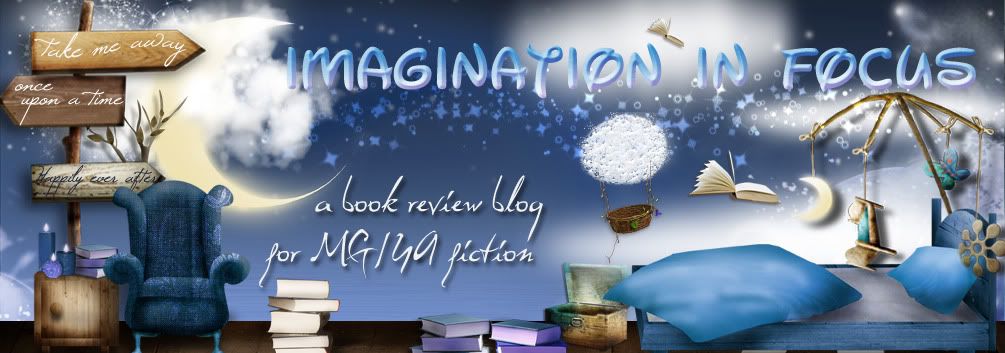 The Dark Queen (The Dark Queen, Book I)
The Dark Queen (The Dark Queen, Book I)By Susan Carroll
Timeperiod: Late 16th century; features the historic St. Batholomew's Day Massacre
Rating: 'R' for violence and sexual content
Age minimum? Yes, grown ups
I give this a
4/5. I gotta say--there were so many times when I expected the plot to evolve one way, and it went in a totally opposite direction. In this case, I mostly didnt mind, and I really liked the sequence of events! - I personally think this book has a pretty decent amount of actual history. I knew that there would be references to the St. Bartholomew's Day Massacre, but I thought that would be the extent of it: just a reference. Those scenes were some of the best-written in the book, I think, and Carroll did a good job capturing the intensity of the situation. Now of course, most of Catherine de Medici's character is mere speculation. A great many people probably did consider her a witch, but here she definitely is one...if you're somebody who likes for historical figures to not be messed with, you might not be too thrilled with her presentation in this story. I was a bit surprised with how large of a role she played in the book: even though the title is a reference to her, I was thinking (from what I had read on some other reviews) that she'd mostly be a background character; I was very much surprised with the level of development given to her. Of course, I think it's always a tricky situation when an author makes a fictional statement/draws a fictional portrayal of a real-life character---in this case, making the "Italian woman" into the vindictive villain. It worked, though. I totally believed (to the best of my history-major ability) that she was indeed a bitchy witch. :D - And now on to the main characters: for the most part, I really liked the story development between Ariane and the Comte. It was not what I expected, but I still enjoyed it...even the more "turn-your-cheeks-red" passages ;P - The only complaint I have is the (in my opinion) OVER-development of the supporting characters, especially the two other sisters. I know that Gabrielle and Miri each have their own specific sequel in this "series," but I expected this book to establish the basics about them and then have them function as secondary elements to the main characters. There were many instances when I skipped over their scenes: I don't care about Gabrielle and her stupid backstory and her relationship with the captain! That's book 2! All in all: a highly enjoyable read: historical FICTION romance done right :D PS--i probably should acknowledge that this is, ummm, NOT for young people. hahhaha. oh my goodness. susan carroll can certainly write a good "kissing scene," but she can also write other scenes as well! (wink wink nudge nudge). i must be really, REALLY immature, because there were times when i just burst out laughing. they're not badly written--not by a long shot!--but still...i thought they were entertaining. :D
 The Silver Rose (The Dark Queen, Book II)
The Silver Rose (The Dark Queen, Book II) By Susan Carroll
Timeperiod: Late 16th century
Rating: 'R' for violence and sexual content
Age minimum? Yes, grown ups
I give this a
4/5. Okay, so I've read so many reviews were people say that this installment of Susan Carroll's fantasyish/historical fiction DARK QUEEN series is their favorite. So maybe I entered with too-high hopes, because while I did enjoy it, I still liked the first book the best. The whole witch/witch-hunter relationship certainly was interesting, but I still would choose Renard over Simon anyday. This book in particular just seemed a little too "wordy." I mean, characters would just go into paragraph-long emotional revelations (in their heads, most of the time) that became extremely repetitive over the 500+-page-course of events. At times, the dialogue would be so "emotional," it would come across as super-sappy. I'm sorry, but if two people are like making out--they're not going to be TALKING so much!!! I busted out laughing quite frequently with this book, that's for sure! It's funny, but also over-the-top, just *how* in-touch Simon seems to be with his feelings--now I'm not saying that men in books should have the emotional capacity of a brick, but when they say things like, "Ever since I was a boy, blah blah blah blah," it makes them seem very unrealistic! Like I said, I do like Simon and Miri and think they are cute together, but at times I thought that there were contradictions in their characterization. Either a character is "innocent" (a word Carroll really likes to use, but doesnt seem to know the definition of), or they're not, so make up your mind! But I will say that I liked the two of them together--their relationship seems natural, and they relate to each other really well (if not too well). There's not as much "history" in this book as
The Dark Queen, but overall that wasnt too much of a loss. Catherine de Medici only has about 2 or 3 scenes in this book, and the climax doesnt revolve around a major historical event like in the first book. And Ariane and Gabrielle - while seen in flashbacks and referred to frequently - dont make an actual appearance. I just thought I'd throw that out there. Rather, a lot of characters from the previous book
The Courtesan (which I have NOT read) are carried over into this book. Again, one thing I like about this series is the ability of each of the books to stand on their own: there's enough recap to make the reader aware of events from previous books without feeling lost or confused. I certainly never felt confused about characters or events, but I never felt like Carroll was getting redundant, either, so she did that well :D So yes, I "really liked it." I liked
The Dark Queen better, but this was enjoyable nonetheless!
 A Company of Swans
A Company of SwansEva Ibbotson
Timeperiod: Early 20th century (I think)
Rating: 'PG-13' for language, thematic elements and sexuality
Minimum age? This book is supposedly for YA readers, and I find that a tad annoying/disturbing. There's frequent implied sex and what I would call "thematic elements" (teen runs away from home and Becomes Independent...gag)
Ehh...it was okay. As a former ballerina, I absolutely loved how ballet was incorporated into the story; it wasnt just used as a way to describe the characters, but it had its own place in the story. But past this general positive, my feelings about the book get a little more confused. This is the only Eva Ibbotson I've read (and you know, while it wasnt an awful read, I certainly dont feel the impulse to go out and read more of her stuff) and her writing style is descriptive and at times even elegant but her characters are very vacillated and her story pacing is really, REALLY weird. This is first and foremost a romance story (there's little to no actual "HISTORY" here) and so therefore the romantic aspect should be the most important and the one that carries the weight of the story. Well, the whole thing just left me feeling rather confused: the relationship is way WAY too rushed at the expense of a moderately-paced blossoming love story in which the reader gets to know the characters well and really see their relationship grow. What could have been sweet and "romantic" gets questionable and downright tawdry. And I consider myself one of the last true Romantics running around today. I love "happily-ever-afters." I love "true love" and all that jazz. But this is just weird. Now granted, there were some good dialogue segments here and there, but not evenly or properly spaced throughout the story. And this is just a personal pet peeve of mine, but I don't understand why authors feel the need to include "previous encounters" of the love interest... THIS IS NOT A CARFAX HISTORY REPORT! I dont want to know all the other people who have driven your car!!! And I am certainly not a progressive, but I found it just a bit weird that this seemingly good-natured, innocent but grounded character would be so quick to tramp herself up. Girls, when you're shacking up with someone on a regular basis (well, that is what "shacking up" means), that's trampy. When the main character (who is at the ripe old age of 18 i might add) communicates a willingness to live as a "kept woman," that's trampy. that's adultery, also. How is that romantic? Like I said before, the characters' profiles just seem to constantly contradict each other. The ballerina in me was satisfied, and there were SOME parts of the harriett-rom romance that i thought was sweet (i like it when guys "rescue" girls--not because girls cant do anything for themselves, but because guys need to get off their butts and be productive! Not because we're weak, because WE'RE WORTH IT!) but overall, not one of my favorites. Ann Rinaldi is still the queen of "HISTORYCAL FICTION" in my book!





























